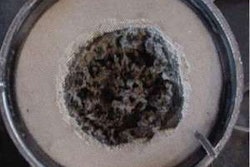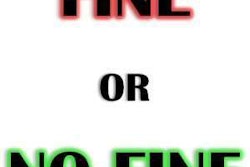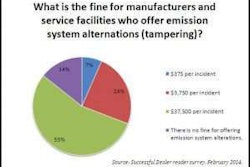Finalized in 2001, the Highway Rule was the Federal government’s first step toward dramatically reducing emissions in the heavy-duty marketplace.
The 2007 rule forced North American OEMs to reduce emissions by more than 90 percent over 2001 levels. At the time, the EPA said the rule would eliminate 2.6 million tons of Nitrogen Oxide (NOx) emissions and 110,000 tons of soot and particulate matter released into the atmosphere each year.
Seven years removed from its introduction, the regulations created by the Highway Rule were updated to create more stringent rules in 2010. Additional regulations for GHG and fuel efficiency standards were created in 2011 for 2014 model year vehicles, and will once again be enhanced in 2018.
In order to achieve these lofty standards, OEMs have turned to highly advanced emission control systems to eliminate particulate matter released into the air.
It’s these additional products — diesel particulate filters (DPF), selective catalytic reduction (SCR) systems, exhaust gas recirculation (EGR) systems and electronic control modules (ECM) — that have been targeted for tampering.
“I think people believe they can get more power” through tampering, says Peter Savage, director of fleet solutions at Clarke Power Services and chairman of TMC’s Emissions Tampering task force.
Formed in 2012, the task force is working to create a Recommended Practice to educate service providers, fleets and technicians about tampering.
Among the task force’s first actions was a technical session at TMC’s 2013 fall meeting in Pittsburgh. The presentation featured speakers from heavy-duty engine manufacturers Cummins and Navistar, as well as the EPA. Together the group attempted to address industry misconceptions about tampering.
One of which was the idea that tampering can increase engine performance.
That’s simply not true says Kevin Otto, director of service at Cummins Emissions Solutions. “These modifications affect the reliability of the engine,” he says. “They don’t make things better.”
Savage notes one of the more commonly seen tampering procedures in the heavy-duty market today is the removal of a DPF. It is illegal to perform this service to on-highway vehicles, but a quick Internet search will reveal a multitude of DPF delete options.
(Editor’s note: When performing this search on Google, ‘DPF delete’ is the first auto-fill option that populates in the search bar.)
Marketed as an off-highway service that improves fuel economy and engine performance, on-highway heavy-duty customers must steer clear of these businesses.
“Under federal law, there are provisions that prohibit altering or removing emissions control devices and manufacturing, selling or installing defeat devices,” says Robert Klepp, lead attorney for the EPA.
In addition to being clearly defined as illegal for on-highway trucks, the potential performance benefits don’t come close to the risk delete programs provide.
“You might think you see one advantage but you’re going to do damage to other parts of the engine,” Savage says. “The system is not designed to work that way.”
Tampering also can be seen in the removal or disconnection of ECM sensors used to operate an after treatment system. This can create a high temperature functioning engine and increase the particulate matter released into the air.
“Tampering may impact repair times and can have a detrimental impact on the durability of the engine and after treatment systems,” says Spencer Dell, on-highway marketing communications representative at Cummins.
Please CLICK HERE for Part III of our investigative report report on emission tampering in the heavy-duty marketplace — the performance risks of tampering.









